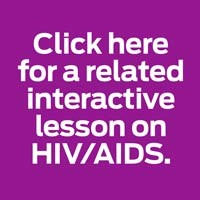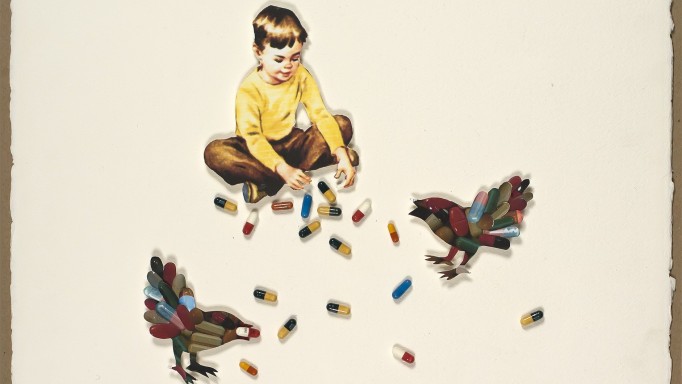HIV is transmitted through the following body fluids:
- Blood
- Semen
- Pre-cum
- Rectal fluids
- Vaginal fluids
- Breast milk
There are several ways this can happen:
- From condomless vaginal/frontal or anal sex with someone who has HIV, while not using a condom or not using medicines to prevent (PrEP and PEP) or treat HIV (undetectable equals untransmittable or U=U).
- From sharing needles, syringes or other injection equipment with someone who has HIV, while not using PrEP.
- From mother to child during pregnancy, childbirth or breastfeeding. However, if the mother is in regular care and on HIV treatment, this risk is reduced to nearly zero.
- From being stuck with a needle or cut with a sharp object that contains HIV-positive blood. This is mostly a risk for health care workers.
- From getting a blood transfusion. However, this risk is rare in U.S.
HIV is not transmitted though saliva, urine, feces, vomit, sweat, animals, bugs or the air. Therefore, you are NOT at risk for HIV if you:
- Are bitten by a mosquito or any other bug or animal.
- Are near a person who is HIV positive and sneezed.
- Eat food handled, prepared or served by a person who is HIV positive.
- Share toilets, telephones or clothing with a person who is HIV positive.
- Share forks, spoons, knives or drinking glasses with a person who is HIV positive.
- Touch, hug or kiss a person who is HIV positive.
- Attend school, church, restaurants, shopping malls or other public places where there are people who are HIV positive.
In the United States, sexual contact is the most common way that HIV is passed from person to person. Sex allows for the exchange of certain body fluids that have consistently been found to transmit HIV: blood, semen, rectal and vaginal secretions. HIV has also been found in extremely low, non-infectious amounts in other fluids (saliva, tears and urine); but no transmissions through these fluids have been reported to the CDC.
According to the Centers for Disease Control and Prevention (CDC) the largest number of new diagnoses in the United States were among men who have sex with men (MSM), which includes gay and bisexual men as well as men who do not necessarily identify themselves in that way. Blacks and Latinos are disproportionately affected by HIV compared to other racial and ethnic groups. Transgender women who have sex with men have the highest risk for HIV infection. People who inject drugs are also at significant risk for getting HIV.
Sexual Transmission of HIV: What Are the Risks?
Studies repeatedly show that certain sexual practices are associated with a higher risk of HIV transmission than others. However, other very recent studies (HPTN 052, PARTNER, Opposites Attract) show that when a person living with HIV is on treatment and undetectable for at least six months, there is effectively no risk for them to pass the virus. The situations discussed below assume that the person living with HIV is not undetectable.
Vaginal/frontal Intercourse
Condomless vaginal/frontal intercourse is the most common mode of HIV transmission worldwide. In the U.S. and many other developed nations, it is the second most common mode of sexual transmission (after anal sex among MSM). Studies show that HIV-positive cisgender men are much more likely to pass the virus to HIV-negative cisgender women or to transgender MSM through vaginal/frontal intercourse than the other way around.
There are a few reasons for this. First, there are more cisgender men than cisgender women living with HIV in the United States. Second, cisgender women and trans MSM have a much larger surface area of mucosal tissue—the lining of both the vagina and cervix can chafe easily and is rich in immune cells that can be infected by HIV. For cisgender men, HIV must enter through a cut or abrasion on the penis or through the lining of the foreskin or urethra at the tip of the penis.
Research suggests that men who are uncircumcised have a higher risk of contracting as well as passing the virus if they are already HIV positive. Although adult male circumcision programs have dramatically lowered new infections, it is important to remember that circumcised men can still contract or transmit the virus.
Men or women who have sexually transmitted infections (STIs), such as genital herpes or syphilis, are more likely to transmit the virus if they are HIV positive or to contract the virus if they are HIV negative.
Anal Intercourse
Condomless anal intercourse is associated with a high risk of HIV.
Being the receptive partner—the bottom—during condomless anal sex puts a person at a much higher risk for HIV, but it’s possible for either partner to get HIV. The reason for this is that semen containing HIV can come into contact with anal mucosal tissues, which can absorb HIV during sex. And the risk of transmission isn’t necessarily reduced if the insertive partner, or top, pulls out before ejaculation. Studies show that pre-ejaculate (pre-cum) can contain high amounts of HIV and can result in transmission during anal sex.
The insertive partner is at lower risk (4–14 times less risky than receptive). However, it is still possible for HIV to enter through a cut or abrasion on the penis or through the lining of the urethra inside the tip of the penis or through immune cells on the foreskin.
Penile-Oral Sex
The risk of penile-oral sex causes the greatest amount of confusion in terms of risk—and it raises the most questions. But most experts agree that fellatio (blow jobs) is not an efficient way to transmit HIV.
Because condomless fellatio allows body fluids from one person to come into contact with the mucosal tissues or open cuts, sores or breaks in the skin of the other person, there is a “theoretical risk” of HIV transmission—meaning that passing an infection from one person to another is considered possible. But the likelihood of it happening is rare, as there are only a few documented cases.
These cases all involved MSM who were giving condomless oral sex to HIV-positive men. No cases of HIV transmission have been reported among female partners giving condomless oral sex. And there hasn’t been a single documented case of transmission to a partner getting condomless oral sex, either among MSM or heterosexuals.
Oral-Vaginal Sex
Like fellatio, this is also considered a low-risk activity. Reports document one case of female-to-female transmission of HIV through cunnilingus and another case of female-to-male transmission of HIV through cunnilingus. Both involved transmission from the partner getting oral sex to the partner giving oral sex. There haven’t been any documented cases of HIV transmission the other way around.
Oral-Anal Sex
Oral-anal sex is often referred to as analingus or rimming. Analingus is not considered to be an independent risk factor for HIV. However, it is a route of transmission for hepatitis A and B, as well as parasitic infections like giardiasis and amebiasis and STDs like herpes or HPV.
Digital-Anal or Digital-Vaginal Sex
Digital-anal or digital-vaginal/frontal sex is the clinical term for using a finger(s) or fist for insertive sex. While it is theoretically possible that someone with an open cut or fresh abrasion on his or her finger or hand could contract HIV if it comes into contact with blood or secretions in the anus or vagina, there has never been a documented case of HIV transmission through fingering.
However, HIV transmission through sharing sex toys is possible and one documented case from the late 1980s occurred between two mixed-status, cisgender women. When sharing sex toys, use separate toys or wash thoroughly before using on a second person.
Last Reviewed: January 5, 2023















